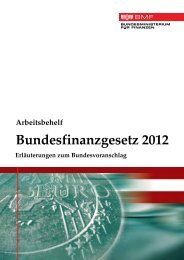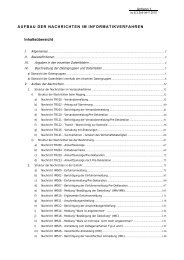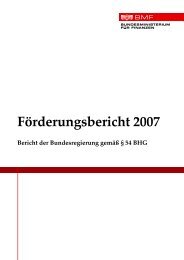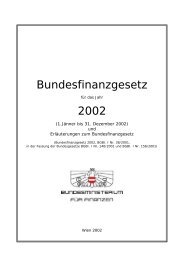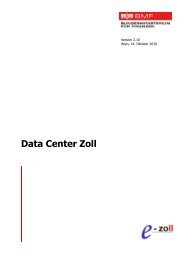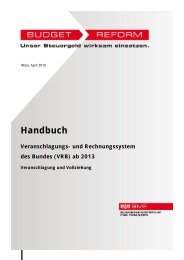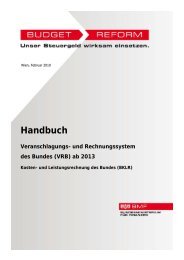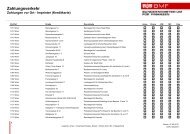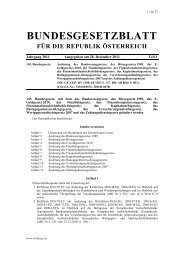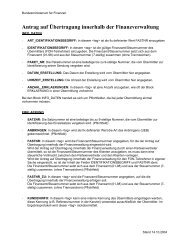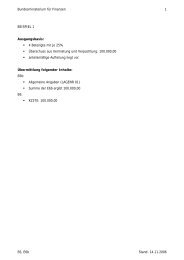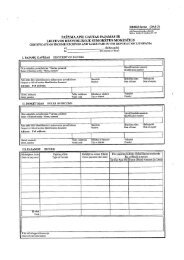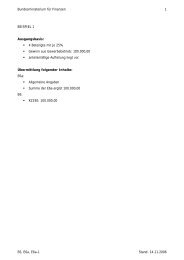Fallback and Recovery Specification (FRS)
Fallback and Recovery Specification (FRS)
Fallback and Recovery Specification (FRS)
You also want an ePaper? Increase the reach of your titles
YUMPU automatically turns print PDFs into web optimized ePapers that Google loves.
DG TAXUD – EXCISE COMPUTERISATION PROJECT REF: ECP2-FITSDEV2-SC03-<strong>FRS</strong><br />
FALLBACK AND RECOVERY SPECIFICATION (<strong>FRS</strong>) VERSION: 3.11-EN<br />
Solution elements<br />
suspended processing (FB04 - no intervention - wait) <strong>and</strong> take complementary steps<br />
whenever the expected event has not arisen (in that case, return of the business<br />
acknowledgement).<br />
5.1.5 PR05: Enqueue message for further automatic recovery<br />
A safe storage of information may help in preparing further recovery where it has reached<br />
an identified level such as:<br />
� arrival of an information exchange regarding a checking failure into a given location;<br />
� positive checking of a submitted message; or<br />
� just before sending an information exchange.<br />
In each case, if the following processing fails, it will be possible to restart from the point<br />
of storage to resume the process.<br />
This solution element is a prerequisite for the business acknowledgement processing<br />
described below (PR06 - business acknowledgement).<br />
Example 1:<br />
When a submitted draft e-AAD arrives in the MSA of dispatch, it is convenient to<br />
securely store it before starting its formal checking; therefore, in case of breakdown<br />
during the checking (e.g. sudden unavailability of resources), the checking can be<br />
resumed when the failure is corrected.<br />
Example 2:<br />
When a submitted e-AAD has been found valid but before allocating the ARC, it is<br />
convenient to securely store it before starting the allocation of the ARC <strong>and</strong> performing<br />
the related actions; therefore, in case of breakdown during these actions (e.g. sudden<br />
unavailability of resources), they can be resumed when the failure is corrected.<br />
Example 3:<br />
When a valid e-AAD is ready to be sent to the MSA of destination, <strong>and</strong> in connection<br />
with the required business acknowledgement, it is convenient to securely store it before<br />
sending it <strong>and</strong> until the business acknowledgement arrives. This makes it possible to<br />
replay the information exchange if neither positive nor negative acknowledgement has<br />
been received in a given time limit.<br />
5.1.6 PR06: Business acknowledgement<br />
It is important for the EMCS business to ensure that an Information Exchange will not be<br />
lost between two MSAs because of a failure or because of a too long transmission delay.<br />
This is particularly uneasy to discover.<br />
It is therefore essential, at least for the essential Information Exchanges, that the sending<br />
MSA has a confirmation that the recipient MSA has correctly received <strong>and</strong> processed that<br />
exchange.<br />
The solution element, named business acknowledgement, consists in a positive<br />
acknowledgement message (ACK) sent back to the issuing MSA. This message<br />
acknowledges that:<br />
ECP2-FITSDEV2-SC03-<strong>FRS</strong>v3.11.doc Page 29 of 53



